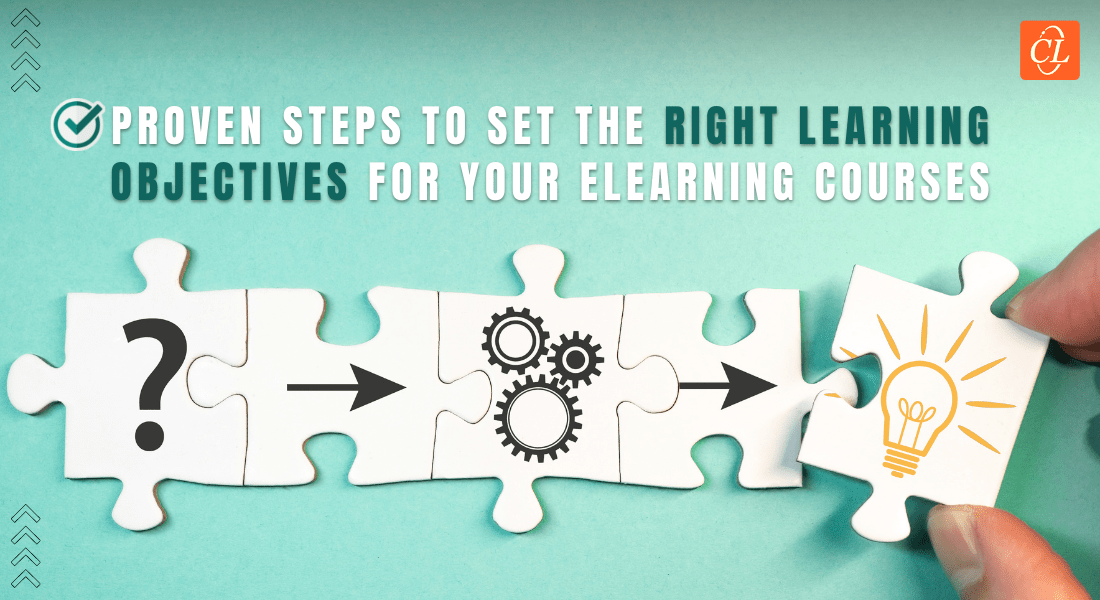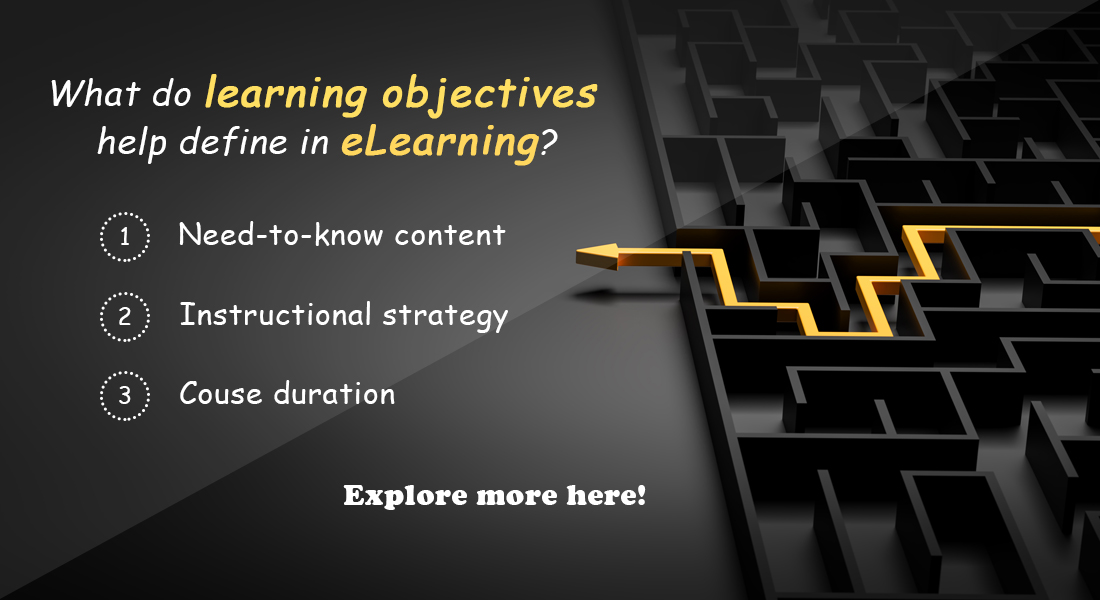5 Steps to Setting Realistic Learning Objectives for Your Corporate Training

Setting realistic learning objectives is one of the most important yet often ignored steps in any corporate training program. Well, it is important to start with the notion that ‘no training program can be successful unless there is a set objective to be fulfilled’.
Setting the objectives enables the organization to plan the entire module and also to evaluate employees’ performance. When there’s a set objective the trainees know what they are expected to learn/ absorb from the training. So, setting objectives for a training program is beneficial for the organization as well as the learners.
Because setting an objective for employee training and development programs is important, you should pay special attention to the details. In this blog, we discuss the step-by-step approach to setting realistic objectives for employee training programs.
Want to Set Realistic Learning Objectives for Your Corporate Training Program?
Follow these steps:
- Know Your Why
- Align With Your Organizational Goal
- Explain Your Purpose Explicitly
- Mould the Purpose into Achievable Mini Goals
- Evaluate Your Set Goals and Objectives
But, before we jump on to the procedure of framing learning objectives let us first discuss a few basic facts.
What is a Learning Objective?
Simply stated, learning objectives are the expectations or goals set in advance for a training program. While planning any training and development program, businesses or organizations should know their purpose for creating the program. No training program is done for the sake of just doing it. The L&D leaders and training managers are well aware of why they are creating a certain training program. Explaining the purpose of a training program explicitly is what we call setting an objective.
The objective of a training program provides details of what information and knowledge a learner will be acquiring from that training. So, this also forms the basis of evaluation for the success of the training program and learners as well.
Characteristics of an Effective Learning Objective
Learning objective is not like a wish list where the organizers tell their wishes or expectations. Before finalizing your learning objectives, you should check them against the following characteristic of an effective training objective.
- Outcome Oriented – Learning objectives must be outcome-oriented i.e. the focus should be on the outcome expected out of the training module.
- Realistic Expectations – When you set your eyes on the outcome you should not forget to be realistic. The objective should be such that can be achieved.
- Consideration of Timelines – When you set a certain goal for your employees, they need to be given ample time for achieving that goal. Not only the expectation but also the set time need to be realistic.
- Set of Mini Goals – Achieving a big objective is not feasible unless it can be divided into mini sub-goals. So, your objective needs to be a collection of mini-goals.
- Measurable – Last but not least, learning objectives must be defined in measurable terms. If you can’t evaluate your employees’ performance against your objectives, there’s no point setting them.
→ Effective learning objectives in setting up product training curriculum for this biopharma company
Step-by-Step Guide to Set Realistic Employee Learning Objectives
Now that you know the importance of setting objectives and also understand the features of an effective training objective, let’s move to the next step. Allow us to walk you through the step-by-step process of setting up realistic employee learning objectives.
Know Your Why
You must know why in the first place you want your employees to join certain training and development programs. Knowing the purpose is the first step towards setting an objective for your training program. Any training and development program held by an organization is for filling a knowledge gap or enhancing certain skills in their employees. You must know what is your ‘why’ for creating a certain training program.
Align With Your Organizational Goal
You must know what your organizational goal is and where your employees lack or need extra support to be better. You need to pinpoint what knowledge or skill gap you are trying to fill through a certain training program. And, you cannot do this unless you completely understand your organizational goals. Whatever learning objectives you set, it must be a stepping stone towards your bigger organizational goals.
Explain Your Purpose Explicitly
Once you are clear about your purpose you will have to document it and share it with your team. Documenting the purpose helps maintain clarity and the teams can work together and take a unified decision.
Mould the Purpose into Achievable Mini Goals
Once you and your team are clear about the purpose of the training program, you need to break it down into mini-goals that are realistic and achievable. See this step as planning a trip where you need to go from point A to point B where A stands for your current position and point B stands for the position you want to achieve. Every journey has some breaks before the final destination. Here also you will break your bigger purpose into smaller goals.
Evaluate Your Set Goals and Objectives
Once you are done with Step 4, start evaluating each of your goals and objectives to see if they contain the characteristics of an effective objective. We have already discussed the features of an effective training objective. You can evaluate your set objectives against the above-discussed yardstick.
Ready to Go!
If your set objectives have all the features of an effective corporate training objective, you are good to go. You can now upskill your employees and measure their performance and progress against your set objectives.
Once you have set the learning objectives, you may want to explore the best ways to develop eLearning courses without having to compromise on the quality. If that is what you are looking for, then make no delays and download this eBook now.





